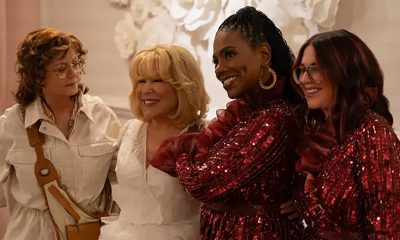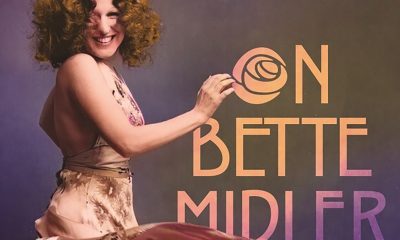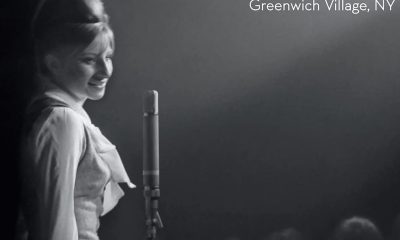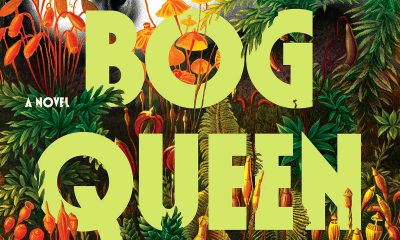Arts & Entertainment
Lighting the way: an interview with singer Janis Ian
Veteran performer embarking on final tour
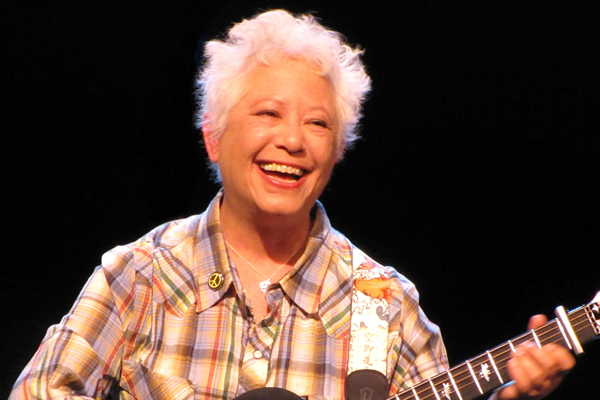
By my count, queer singer/songwriter Janis Ian has had four distinct chapters in her musical career. The first began when she was in her teens with the release of her groundbreaking single “Society’s Child,” and the albums on Verve Records that followed in the late 1960s. By the mid-1970s, for the second chapter, Ian signed to Columbia Records, resulting in the biggest hit single of her career, the Grammy Award-winning classic “At Seventeen.” She remained on Columbia into the early 1980s, even collaborating with Giorgio Moroder on the song “Fly Too High.” The third chapter occurred in the early 1990s. Bette Midler recorded Ian’s song “Some People’s Lives,” the title track of Bette’s Grammy-winning 1991 album. Ian herself recorded the song for her marvelous 1993 comeback album, the aptly titled “Breaking Silence.”
Ian has not been sitting idle since that time, mind you. She’s released a few more albums, including some on her own Rude Girl Records label. She also published her memoir “Society’s Child: My Autobiography” in 2008 and won her second Grammy for the audiobook. I have had the pleasure of interviewing Janis in 1994, 2004, 2008, and in 2022, and it is always a revelatory experience. She was kind enough to answer a few questions in advance of the release of her flawless new album “The Light at the End of the Line” (Rude Girl).
BLADE: I’ve been racking my brain trying to come up with the best way to say this, and I keep returning the fact that with The Light at the End of the Line, your extraordinary last solo studio album, you are going out with a bang.
JANIS IAN: [Laughs] better a bang than a whimper!
BLADE: What was involved in the decision to make this your final studio recording?
IAN: I think hitting 70 was a big part of it. Having the last 15 years to put together songs and wanting to make something that was better than anything I’d done before was involved. Mostly, the timing really worked out. I went into lockdown right around when I needed or wanted to start thinking about this. I had no plans until I looked up at my write board and realized I had 15 songs I was pleased with, and one unfinished. I started listening to what Randy Leago had done with “Resist,” and I began working with Viktor Krauss on “Better Times…” I had originally intended to do an all-solo acoustic album, but it became clear that I really wanted a blend of it to serve the songs. There wasn’t a sudden, “Gee, I’ll make an album now” decision. There was more a talking to people and seeing where Randy and Viktor’s schedules were. Seeing where John Whelan was. Whether we could get Nuala Kennedy to do her parts from Ireland. Finding a studio where I live, which is near Bradenton, so there’s not a huge amount of studios available. Then just winnowing down the songs and going, “Well, I think this is actually an album.”
BLADE: Among the many aspects that make The Light at the End of the Line exceptional is that for the 12 songs, you draw on the many influences spanning your five-decade career, beginning with “I’m Still Standing,” which is as personal as, say, “At Seventeen.”
IAN: I would say so. That was part of my goal for the entire album, and part of the winnowing down of songs, was to make sure that the songs I picked were as universal as possible, and also songs that would hopefully stand the test of time. I mean it’s incredible that “At Seventeen” was released in 1975. It’s 45 years later and it’s still getting lots of airplay. Lots of people still sing it. People are still affected by it, young people, not people anywhere close to my age. So, to make an album that would reach as many people as possible emotionally, and at the same time have songs that were as well-written as I’m capable of doing after almost 60 years as a songwriter; that was the challenge, really. So, I’m glad to hear you say that.
BLADE: The social consciousness of your music extends all the way back to “Society’s Child” and continues today with songs such as “Stranger” and “Resist.” Please say a few words about the role of social commentary in your music.
IAN: I was raised in a very political family. I grew up stuffing envelopes and going to marches. My parents were both politically aware. My mom did things like attend the Civil Rights Congress. My parents were under watch by the FBI. So, it was a natural part of my life. Everyone we knew was involved, in one way or another, in politics and social issues, because I would regard feminism as much as a social issue as a political one. Although the line between the two is pretty blurred these days as I’m sure you know. “Stranger” just came out of nowhere one night. I had an off night and I never write on the road, ever. I think I’ve written two songs in my life while I was touring. But I was changing guitar strings and came up with that little pattern and the song just fell out in the course of the evening. I’ve been thinking about it a lot because my own grandfather had to come into America on a cousin’s passport. None of us found out his real name or the story until we were in our 20s and 30s. So I started thinking with all these people saying “illegals should be deported, even if they grew up here, even if they were born here, even if they’ve lived here 40 years, where does that leave me? Should I be sent back to Poland or Russia or the Ukraine?
BLADE: It truly resonates and it’s an ongoing issue. That leads me to the next question, which is about the anthemic single “Resist,” which is one of the album’s most powerful statements, with its “I will not disappear” and titular chants. Are you ever shocked that you still find yourself having to write and perform a song such as this?
IAN: I’m shocked that it hasn’t been fixed by now [laughs], and that it seems to be getting worse. I think that in some ways my generation underestimated the determination of the powers that be to stay in power. We knew about the FBI and the CIA, but it would never have occurred to us that there would still be genital mutilation. That women would still be burned on pyres. That there would be revenge rape. It’s a shock that these things still need to be addressed, but it’s not shocking that they need to be written about. I also think that music cuts through the noise in a way that very few other things can. Politics becomes just noise. Social media becomes just noise. Music has the ability to touch people’s hearts directly in a way that none of those things can. I didn’t set out with “Resist” and think, “Oh, I’m going to write a protest song about this.” But I was plenty annoyed when I wrote it.
BLADE: That definitely comes through.
IAN: It’s a fine line for me because my voice only carries so far. I can’t do what certain singers can do with their voices. I have a relatively light voice. That’s one of the great things about Randy Leago, and what he did with it. Because he managed to leave all that space for the vocal while surrounding it with…oh, I think I had asked for angry drums. So, the first thing you hear is that thud of the bass drum, which to me is like a footstep coming into the room. Lines like “I cannot be your virgin and I will not be your whore” came out of my own experience.
BLADE: It really is an incredible song. “Nina” is a breathtaking tribute to Nina Simone. It made me think about her performance in Questlove’s 2021 documentary Summer of Soul, and how she’s being reintroduced to new generations. Have you seen the doc?
IAN: I have not seen that, but I did see the Liz Garbus documentary What Happened, Miss Simone? (from 2015) because she’s singing my song in it.
BLADE: What do you think she’d think of your song about her?
IAN: [Big laugh] I would not begin to wonder what Nina would think about anything. I wouldn’t go there for $1,000,000. Well, maybe for $1,000,000, but I would be pretty unsure of myself. Nina was monumentally easy and monumentally difficult to love. That’s what I tried to capture in the song. She was biologically ill, mentally ill, I would say, but I’m not sure what the correct phrase is these days. But there was such a big biological aspect to it and by the time that was really beginning to be understood and treated, she had already burned so many bridges and made so many people angry. I feel like I saw Nina at her best and her worst. Her best was so much better than any other performer I’ve ever watched. And her worst was pretty scary.
BLADE: As a gay man, I have always loved the story about Nina’s correspondence with Langston Hughes.
IAN: She and (James) Baldwin (were friends), too. We had lunch at my mother’s one day and she showed up with James Baldwin in tow. I don’t think she cared about that at all because artists tend not. It doesn’t really matter, it’s like skin color. Who cares as long as you’re doing great work. It’s the world that surrounds us that becomes the problem.
BLADE: That is very true! Album closer “Better Times Will Come” is the kind of uplifting number we all need at this time. I was delighted by Diane Schuur’s scat…
IAN: Isn’t she great? Deedles!
BLADE: Her “Shayna maidel” shout-out elevates the song to a different level.
IAN: We probably talk every couple of weeks or more often. We’re good buddies. She’s great.
BLADE: Was that song as much fun to record as it is to listen to?
IAN: It began out of the Better Times project that I started when lockdown began — bettertimeswillcome.com. That involved, in the end, 187 artists all doing their own versions of the song. We’ve got 13 versions still to put up! Everything from Japanese sign language interpretation to a Dutch version to a Mandarin Chinese version to banjo or guitar or flatfooting. When it came time to record it, I wanted to close the album with it, but do something completely different from what I’d done already. My version that everybody worked off for the project was just me singing the song immediately after I finished it into my phone, no guitar, no nothing. You can go to bettertimeswillcome.com and watch all those videos, see all those versions, listen to them, download them. It was a great way to promote other artists who had projects coming out and suddenly couldn’t tour or make book appearances, all of that through my Facebook page. The Facebook people were wonderfully generous. I didn’t want to repeat that or reuse it, so it became question of how I do this so that it’s totally different from anything on the album and it maintains that spirit of inclusivity. I reached out to Viktor and we literally both sat down with our phone books and went, “OK, this person would be great. That person would be great. Are they available?” Vince Gill wasn’t available because he’s out with the Eagles. We told Vince we had a two-month window and he literally turned it in three days before we went to mix. With Deedles (Schuur), she’d been in lockdown for a while. There was no nearby studio. It was working with her manager to find a studio and then coordinating it with her so that she felt safe, and she could do it in her own time, in her own way. For all the musicians, it became a question of me saying, “This is a step-out moment. Treated it like you’re in the (Tommy) Dorsey bands in the old days and he suddenly points to you and says “You take your solo. No preparation, no leading up to it, no ramping up. You just start max.” I was really pleased with it. John Cowan singing a verse to start off with. That’s not something I’ve ever been able to do, and I’ve always wanted John to sing one of my songs. The harmonies are great. People like Andrea Zonn, who’s normally out with James Taylor, because of COVID they were available. It worked for the piece. Viktor and Jared (Anderson), the young engineer he found, worked at assembling. We spent a lot of time on it. It felt like we just needed something to give us all a bit of hope, and yet to recognize COVID, which is why the ending is what it is. Because we keep thinking we’re good and then we’re not and we think we’re good and then we’re not. Trying to speak to that, as well.
BLADE: As a songwriter, you have a long history of having your songs recorded by other performers. If you had to choose one song from The Light at the End of the Line to be covered by another artist, what song would it be and who would want to hear sing it?
IAN: Oh, man, that’s pretty easy! I would have P!nk record “Resist.” I think she would slay that; I think she would just kill that song.
BLADE: Not only is The Light at the End of the Line your last studio recording but the multi-city tour on which you will be embarking throughout most of 2022 is your final North American tour. What will you miss the most and the least about touring?
IAN: The thing you miss about touring when you’re not touring is the audience. I have really good audiences. Everything from the male or female seven-year-old would-be guitarist whose parent or grandparent thinks “You should see a really good acoustic guitarist” to the 80-year-old person who’s been following me since “Society’s Child.” It’s a really broad range. I meant it when I said (in the album art) that “this album is a love song” because when I wrote (the song) “The Light at the End of the Line” I looked at it as what I was saying to my fans. One of the difficult possibilities that artists face in these days of social media and easy advertising is making sure that you consider your supporters. A word I prefer to fans, because “fans” has other connotations. The people who have always supported me — I go back to Facebook as an example – there’s a social media everybody said you can’t make money from. And yet, one year when we held the sale for our Pearl Foundation, 70% of the money came from Facebook followers. I have to believe that if you do as I’ve done; if you don’t accept advertising on your page, if you don’t bother people, if you just present yourself and have a good time, they stay with you. I have more than half a million followers to attest to that. There are a lot of potential pitfalls that I try to avoid because I really respect the people who support my work. That’s an absurd cliché, Gregg, but it’s true. I respect those people. I have a lot of gratitude toward those people.
BLADE: Do you have a feeling that they know that?
IAN: Absolutely! When I was staying after every show and signing, which I did for 30 years, I would hear that. That was very direct. The Light at the End of the Line also becomes a way for me to say, “You stuck with me when I was not a great writer. You stuck with me when I didn’t really know what I was doing, and I grew up in this fishbowl. Here’s our payoff. I am now a really good writer and singer, and here’s a love song for you.
BLADE: The last couple of years have been brutal, to say the least, and we lost many great friends and artists, including Nanci Griffith and John Prine. Would you mind saying a few words about Nanci and John?
IAN: Nanci was a very under-recognized songwriter, like Dolly Parton. And a great interpreter. She called me one day and said, “Janis, I need a Janis Ian folk song.” [Laughs] “I don’t know what that means” and she said, “Just let it roll around.” I called my friend Jon Vezner and I said, “Nanci Griffith wants a Janis Ian folk song and I have this idea for something that’ll begin ‘This old town should have burned down in 1929’,” and he said, “Fantastic! I’ll be over tomorrow morning.” That’s how Nanci operated. She left you to do what you do. John’s death really took me aback. It hit me very hard. It’s not that we were that close, but I had known John since we’re both in our early 20s. We had seen each other at the Cambridge Folk Festival a little short while before, or it felt like a short while before. “Better Times Will Come” literally grew out of that. I was in our house, in the garage doing laundry, thinking about John. “Better times will come” started running through my head. I wrote it, basically, because John died. I’m not sure what I would have written without that. Somebody once said to me, “You will never be able to write a three-chord song.” Gregg, this is literally the only three-chord song I have written in my life. I have to think that on some level, without getting weird about it, John was out there encouraging it. He was the king of simplicity. John was simple and direct in a way that very few of us ever get to be. (He’s) sorely missed.
a&e features
Visible and unapologetic: MAL brings the kink this weekend
Busy lineup includes dances, pups, super heroes, and more
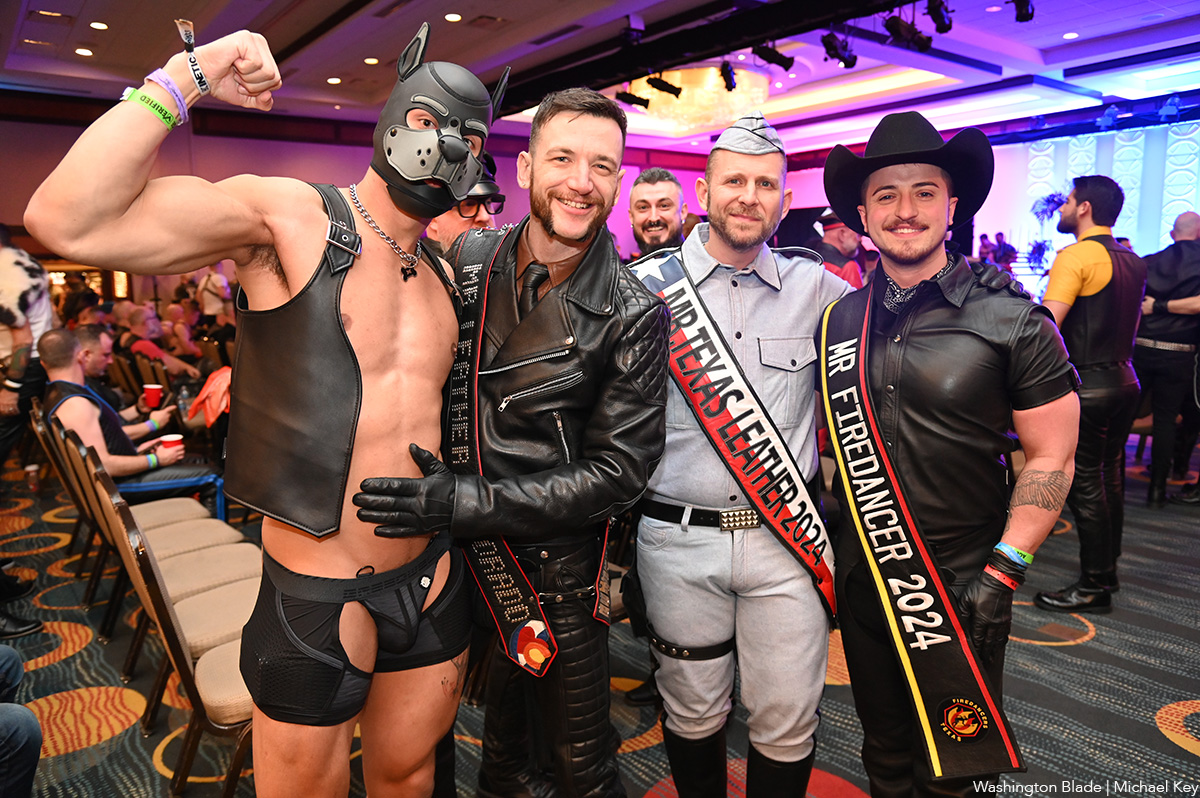
MLK Weekend in D.C. brings the annual Mid-Atlantic Leather (MAL) Weekend. Just a short walk from where Congress has been attacking queer Americans this year, MAL takes place at the Hyatt Regency Washington for several days of intrigue, excitement, leather, and kink.
The Centaur Motorcycle Club — one of several similar groups dedicated to leather in the country — has been hosting MAL in its current form for more than 40 years. Originally a small gathering of like-minded people interested in the leather lifestyle, MAL has grown to include a full four days of events, taking place onsite at the Hyatt Regency Washington (400 New Jersey Ave., N.W.). Select partner happenings take place each night, and many more non-affiliated events are scattered across the DMV in honor of and inspired by MAL.
MAL Weekend has become an internationally renowned event that celebrates fetish culture, yet it also raises funds for LGBTQ organizations, “reinforcing its legacy as both a cultural and philanthropic cornerstone of the global leather community,” according to MAL organizers.
During the day, MAL events at the Hyatt include workshops, social gatherings, shopping, and other in-person engagements for the community.
“The Hyatt underwent an extensive top to bottom renovation after last year’s event,” says Jeffrey LeGrand-Douglass, the event chair. The lobby, meeting spaces, guest rooms, and other areas have been updated, he notes, “so I am very excited for our guests to experience the new design and layout for the first time. And of course as with every year, we look forward to the contest on Sunday afternoon and seeing who will become our new Mr. MAL.”
In the evening, MAL hands the reins to partner KINETIC Presents, the D.C.-based nightlife production company. KINETIC will host four consecutive nights of high-production events that fuse cutting-edge music, immersive environments, and performance. This year, KINETIC is popping open doors to new-to-MAL venues, international collabs, play zones, and a diverse lineup.
According to KINETIC managing partner Zach Renovátes, 2026 is the most extensive MAL production to date. “The talent lineup is unreal: an all-star roster of international DJs, plus drag superstar performances at the Saturday main event,” he says.
Renovátes added that he’s “most excited about the collaborations happening all weekend — from bringing in MACHO from WE Party Madrid, to teaming up with local leather groups, to nonprofit partners, and Masc Diva [a queer nightlife collective].”
Official MAL events begin on Thursday with the Full Package/Three Day Pass Pick-Up from 5:30-8:30 p.m. at the Hyatt.
Thursday night is also the KINETIC kickoff party, called LUST. Running 10 p.m. – 3 a.m., it’s being held at District Eagle. DJ Jay Garcia holds it down on the first floor, while DJ Mitch Ferrino spins in the expansive upstairs. LUST features special performances from the performers including Serg Shepard, Arrow, Chase, and Masterpiece.
Renovátes notes that the LUST opening party at District Eagle coincides with the bar’s grand re-opening weekend. The bar will unveil its new permanent home on the renovated second floor. “it felt like the perfect place to start Mid-Atlantic Leather weekend — right in D.C.’s only dedicated home for kink communities,” he says.
After Thursday night, Friday is when daytime events begin at the Hyatt. The Exhibit Hall, on the ballroom level below the lobby, hosts upwards of 30 vendors, exhibitors, and booths with leather goods, fetish wear, clothes, toys, other accessories, providing hours of time to shop and connect with attendees and business owners. The Exhibit Hall will be open on Friday from 4-10 p.m., as well as on Saturday and Sunday afternoons.
DC Health is once again back at MAL, to provide preventative health services. In the past, DC Health has provided MPox vaccines, Doxy PEP, HIV testing, Narcan kits, and fentanyl test strips. This booth will be open on Friday 4-10 p.m.
Later, at 6 p.m., the Centaur MC is holding its welcome reception on the ballroom floor. After the Centaur’s Welcome Reception, the MIR Rubber Social is 8-11 p.m. A Recovery Meeting is scheduled at 10 p.m.
Many attendees enjoy visiting the guest room levels of the hotel. Note that to get in an elevator up to a hotel room, a staff member will check for a hotel room wristband. Non-registered guests can only access host hotel rooms if they are escorted by a registered guest with a valid wristband. Registered guests are permitted to escort only one non-registered guest at a time. Non-registered guests with a wristband who are already in the hotel before 10 p.m. may remain until midnight. However, non-registered guests without a wristband will not be admitted after registration closes.
Friday night, for the first time, KINETIC Presents is joining forces with WE Party to bring MACHO to Washington, D.C. This official MAL Friday event delivers two stages and two genres. On the UNCUT XXL stage, international Brazilian circuit superstars Erik Vilar and Anne Louise bring their signature high-energy sound. On the MACHO stage, Madrid’s Charly is joined by Chicago’s tech-house force, Karsten Sollors, for a blend of techno and tech house. UNCUT also features the XL Play Zone, a massive, immersive space exclusive to this event. The party takes place at the Berhta space from 10 p.m.-4 a.m..
“This year we’re bringing back the two-room format we debuted at WorldPride for both Friday and Saturday, so attendees can really tailor their experience — whether they’re in the mood for circuit or tech house.” says Renovátes.
Directly after Friday’s UNCUT XXL, UNDERWORLD Afters takes over District Eagle, from 3:30-8 a.m. International DJ Eliad Cohen commands the music.
Saturday, the Exhibit Hall opens earlier, at 11 a.m.. DC Health will also be back from 11 a.m. to 6 p.m.
Saturday is also time for one of the most anticipated events, the Puppy Mosh, running from 11 a.m. to 1 p.m. During the event, pup culture comes to life, when pups, handlers, and friends can enjoy an inclusive, safe pup zone. There is also a Recovery Meeting at 11 a.m., and the IML Judges Announcement takes place at noon.
The popular Super Hero Meet Up will be held 1:30 p.m. – 3 p.m., sponsored by One Magical Weekend, for cosplayers, comic enthusiasts, and their friends.
From 2-6 p.m., the Onyx Fashion Show will take place to showcase and highlight people of color in leather.
Finally, the Leather Cocktail Party – the original event of MAL – will be held 7-9 p.m. in the Ballroom. While this requires special tickets to attend, at 9 p.m. is the MAL cocktail party, which is open to wider attendees.
The last event of Saturday leaves the hotel, again a partnership with KINETIC. Kicking off at 10 p.m. and running until 4 a.m., it’s just the second time that KINETIC’s Saturday night party is an official MAL event and serves as the main weekend engagement.
Saturday night’s centerpiece is called KINK: Double Trouble. The night will feature a first-ever back-to-back set from international electronic music icons Nina Flowers and Alex Acosta on the Circuit/Tribal Stage. The other room – the Tech House Stage – curated by The Carry Nation and Rose, provides a darker, underground counterpoint, reinforcing the event’s musical depth and edge.
Beyond the DJs, KINETIC has called in the big shots for this party: “RuPaul’s Drag Race” legends Nymphia Wind and Plastique Tiara are set to headline. The party also takes place at Berhta.
Sunday, back at the hotel, there will be another Recovery Meeting at 10 a.m., and the Exhibit Hall opens again from 11 a.m.-5 p.m.
At 1 p.m., the anticipated and prestigious Mr. MAL Contest that celebrates the achievements of the leather community will be held in the Ballroom. This highly sought after title gives one man the power to become the Mid-Atlantic Leather man of the year. Sash and title winners must be (1) male, (2), a resident of North America, (3) At least 21 years of age; and (4) self-identify as gay. The first Mr. MAL was crowned in 1985. The Winner of Mr. MAL has the privilege of later competing in International Mr. Leather (IML) in Chicago on Memorial Day Weekend 2025.
From 4 p.m. to 12 a.m., MAL will hold its Game Night for the gaymers in attendance. There will also be a special screening of A24’s new film, “Pillion,” about a man who is swept off his feet when an enigmatic, impossibly handsome biker takes him on as his submissive.
Sunday closes with a community partner event produced by Masc Diva, featuring Horse Meat Disco with support from Coach Chris, at A.I. Warehouse in the Union Market district. It’s the same team that produced HMD during WorldPride at A.I. Warehouse.
Note that there are several types of passes for attendance to the hotel and parties. KINK VIP Weekend Passes include express entry, VIP areas, and enhanced amenities throughout the weekend, while MAL Full Weekend Package holders receive access to the official Sunday closing event.
At last year’s MAL events, KINETIC Presents raised more $150,000 for LGBTQ charities, and expects to match or exceed that impact in 2026.
Renovátes stated that “now more than ever, it’s important to create safe, affirming spaces for our community — but it’s just as important to be visible and unapologetic. We want to make it clear that the LGBTQ+ and leather communities aren’t going anywhere. We’ve fought too long and too hard to ever feel like we have to shrink ourselves again, no matter what the political climate looks like.”
In addition to the KINETIC events, various LGBTQ bars will hold parties celebrating the theme of the weekend. For example, Kiki, located on U Street NW, is hosting a party called KINKI, hosted by DJ Dez, on Saturday night. Sister bar Shakiki, on 9th Street NW, is hosting a party called Railed Out, a fetish-inspired party that features a play zone, on Thursday night. Flash, on U Street NW, will hold its infamous Flashy Sunday party to close out the weekend.
Books
‘The Vampire Chronicles’ inspire LGBTQ people around the world
AMC’s ‘Interview with the Vampire’ has brought feelings back to live

Four kids pedaled furiously, their bicycles wobbling over cracked pavement and uneven curbs. Laughter and shouted arguments about which mystical creature could beat which echoed down the quiet street. They carried backpacks stuffed with well-worn paperbacks — comic books and fantasy novels — each child lost in a private world of monsters, magic, and secret codes. The air hummed with the kind of adventure that exists only at the edge of imagination, shaped by an imaginary world created in another part of the planet.
This is not a description of “Stranger Things,” nor of an American suburb in the 1980s. This is a small Russian village in the early 2000s — a place without paved roads, where most houses had no running water or central heating — where I spent every summer of my childhood. Those kids were my friends, and the world we were obsessed with was “The Vampire Chronicles” by Anne Rice.
We didn’t yet know that one of us would soon come out as openly bi, or that another — me — would become an LGBTQ activist. We were reading our first queer story in Anne Rice’s books. My first queer story. It felt wrong. And it felt extremely right. I haven’t accepted that I’m queer yet, but the easiness queerness was discussed in books helped.
Now, with AMC’s “Interview with the Vampire,” starring Jacob Anderson as Louis de Pointe du Lac — a visibly human, openly queer, aching vampire — and Sam Reid as Lestat de Lioncourt, something old has stirred back to life. Louis remains haunted by what he is and what he has done. Lestat, meanwhile, is neither hero nor villain. He desires without apology, and survives without shame.
I remember my bi friend — who was struggling with a difficult family — identifying with Lestat. Long before she came out, I already saw her queerness reflected there. “The Vampire Chronicles” allowed both of us to come out, at least to each other, with surprising ease despite the queerphobic environment.
While watching — and rewatching — the series over this winter holiday, I kept thinking about what this story has meant, and still means, for queer youth and queer people worldwide. Once again, this is not just about “the West.” I read comments from queer Ukrainian teenagers living under bombardment, finding joy in the show. I saw Russian fans furious at the absurdly censored translation by Amediateca, which rendered “boyfriend” as “friend” or even “pal,” turning the central relationship between two queer vampires into near-comic nonsense. Mentions of Putin were also erased from the modern adaptation — part of a broader Russian effort to eliminate queer visibility and political critique altogether.
And yet, fans persist to know the real story. Even those outside the LGBTQ community search for uncensored translations or watch with subtitles. A new generation of Eastern European queers is finding itself through this series.
It made me reflect on the role of mass culture — especially American mass culture — globally. I use Ukraine and Russia as examples because I’m from Ukraine, spent much of my childhood and adolescence in Russia, and speak both languages. But the impact is clearly broader. The evolution of mass culture changes the world, and in the context of queer history, “Interview with the Vampire” is one of the brightest examples — precisely because of its international reach and because it was never marketed as “gay literature,” but as gothic horror for a general audience.
With AMC now producing a third season, “The Vampire Lestat,” I’ve seen renewed speculation about Lestat’s queerness and debates about how explicitly the show portrays same-sex relationships. In the books, vampires cannot have sex in a “traditional” way, but that never stopped Anne Rice from depicting deeply homoromantic relationships, charged with unmistakable homoerotic tension. This is, after all, a story about two men who “adopt” a child and form a de facto queer family. And this is just the first book — in later novels we see a lot of openly queer couples and relationships.
The first novel, “Interview with the Vampire” was published in 1976, so the absence of explicit gay sex scenes is unsurprising. Later, Anne Rice — who identified as queer — described herself as lacking a sense of gender, seeing herself as a gay man and viewing the world in a “bisexual way.” She openly confirmed that all her vampires are bisexual: a benefit of the Dark Gift, where gender becomes irrelevant.
This is why her work resonates so powerfully with queer readers worldwide, and why so many recognize themselves in her vampires. For many young people I know from Eastern Europe, “Interview with the Vampire” was the first book in which they ever encountered a same-sex relationship.
But the true power of this universe lies in the fact that it was not created only for queer audiences. I know conservative Muslims with deeply traditional views who loved “The Vampire Chronicles” as teenagers. I know straight Western couples who did too. Even people who initially found same-sex relationships unsettling often became more tolerant after reading the books, watching the movie or the show. It is harder to hate someone who reminds you of a beloved character.
That is the strength of the story: it was never framed as explicitly queer or purely romantic, gothic and geeky audiences love it. “The Vampire Chronicles” are not a cure for queerphobia, but they are a powerful tool for making queerness more accessible. Popular culture offers a window into queer lives — and the broader that window, the more powerful it becomes.
Other examples include Will from “Stranger Things,” Ellie and Dina from “The Last of Us” (both the game and the series), or even the less mainstream but influential sci-fi show “Severance.” These stories allow audiences around the world to see queer people beyond stereotypes. That is the power of representation — not just for queer people themselves, but for society as a whole. It makes queer people look like real people, even when they are controversial blood-drinkers with fangs, or two girls surviving a fungal apocalypse.
Mass culture is a universal language, spoken worldwide. And that is precisely why censorship so often tries — and fails — to silence it.
Arts & Entertainment
Teyana Taylor, Erin Doherty have big night at Golden Globes
“Heated Rivalry” stars Connor Storie and Hudson Williams among presenters

Honoring Tinseltown’s finest actors and actresses in film and television, the 83rd annual Golden Globes awards had a myriad of memorable LGBTQ moments from throughout the show.
The prestigious A-list event had first time winners like LGBTQ ally Teyana Taylor, taking home the award for Best Supporting Female Actor – Motion Picture for her mesmerizing portrayal of Perfidia Beverly Hills in “One Battle After Another.”
Addressing the audience she said: “To my brown sisters and little brown girls watching tonight, our softness is not a liability. Our depth is not too much. Our light does not need permission to shine. We belong in every room we walk into, our voices matter, and our dreams deserve space. Thank you so much, everybody.”
Another first-time winner was Rhea Seehorn, who won Best Female Actor in a Drama Series for her portrayal as Carol, a queer woman in the Apple TV+ series “Pluribus.”
Created by Vince Gilligan, known for“Breaking Bad”and “Better Call Saul,” Seehorn said it was important “to honor getting the chance to play anybody from the LGBTQ community,” adding that she loves that this is not “the remarkable thing” about Carol.
“It is part of who she is as a human being, and her relationship with her wife that she’s lost is given so much weight because it is a partnership of love,” she said backstage in the pressroom.
“Vince is not trying to make a political statement. He’s actually just trying to say something about being human and what real love is. And so, it makes me very proud that it just happens to be a queer woman.”
Also, lesbian actress Erin Doherty was thrilled to be a first-time winner, receiving the award for best performance by a female actor in a supporting role on television, for Netflix’s “Adolescence.”
“I didn’t want to assume, but I feel like we all know therapists,” Doherty said. “Life can be tough. Mental health is everything. Thank you to therapists, and it was an honor to play one.”
Doherty received the accolade from the stars of the gay Canadian hockey series, “Heated Rivalry,” Hudson Williams and Connor Storrie. Experiencing an overnight success, the dynamic duo were first time attendees and presenters at the Globes.

In a fun comedy bit, Storrie, who was pretending to be shy on stage, said: “It’s a little nerve-wracking here, being at our first Golden Globes!” Williams replied: “Just take a deep breath and picture everyone in the audience … you know,” referring to the idea that in order to get over stage fright, you have to picture the audience with no clothes on.
“I don’t really know if that works since everyone’s seen us … you know,” Storrie quipped. Williams then asked if he thought everyone in the Hilton Ballroom had seen their show.
Storrie replied, “That’s a maybe, but their trainers have and their moms have and their daughters have!”
“Rivalry” is based on the gay romance book series by Rachel Reid called “Game Changers.” Earlier in the week, the Washington Blade caught up with Williams, who said it was “truly a dream come true” to be at the Globes. “I had no idea the show would be received so warmly, it has made my heart happy.”
Another phenomenon that won at the Globes was Netflix’s hit animated film, “KPop Demon Hunters,” which received three Golden Globe nominations, including best animated film, cinematic and box office achievement and best original song for “Golden,” with gay co-songwriter Mark Sonnenblick.
A controversial moment in the show was when presenter/comedian/LGBTQ activist Wanda Sykes presented the award for best stand-up comedy performance on TV. “Shoutout to the Golden Globes for having me. You know there’s some people pissed off that a queer Black woman is up here doing the job of two mediocre white guys.”
As she made jokes about each of the nominees, Sykes had a few terse words to say to Ricky Gervais, who was not present. The British comedian got in trouble for his jokes about the transgender community in his 2022 Netflix special.
“I love you for not being here. If you win, I get to accept the award on your behalf, and you’re going to thank God and the trans community.”
While Gervais did win for his stand-up comedy special, “Mortality.” Sykes had a swift reply, asking Taylor if she could borrow her (acceptance) speech.
“Because [Ricky] would like to thank God and the trans community.”

